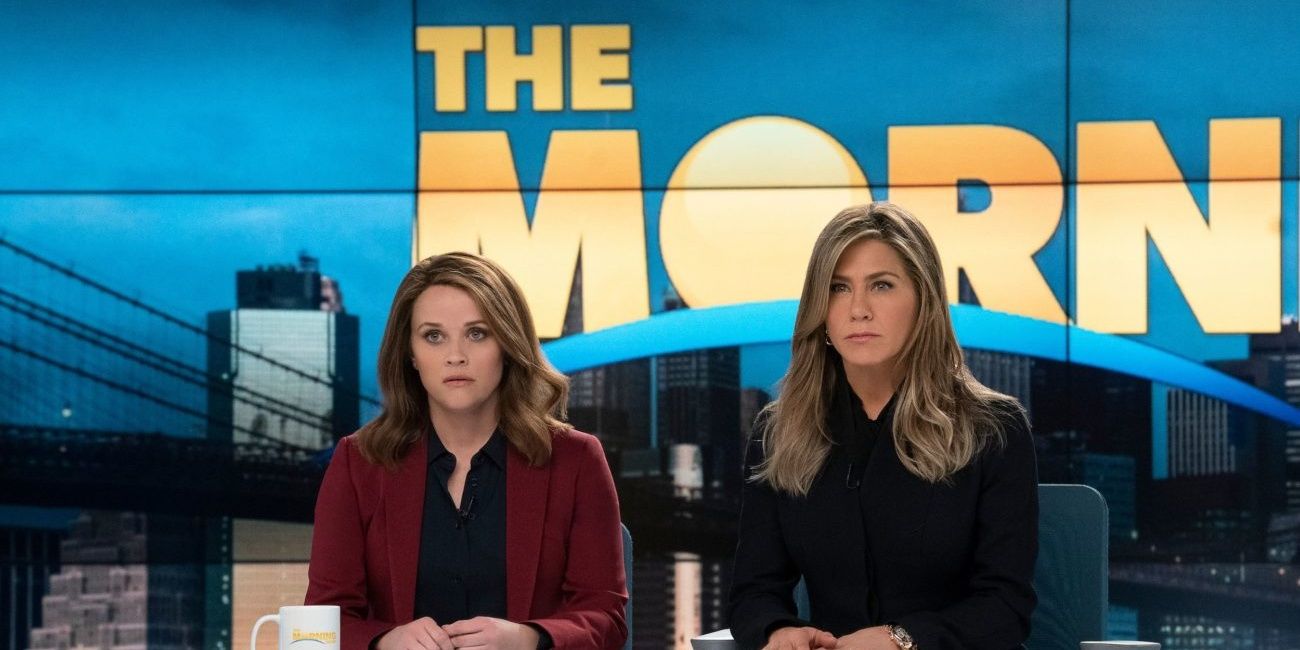 In recent years, the streaming industry has been hailed as the “golden age” of television, providing audiences with an unprecedented array of choices, unparalleled convenience, and an abundance of original content.
In recent years, the streaming industry has been hailed as the “golden age” of television, providing audiences with an unprecedented array of choices, unparalleled convenience, and an abundance of original content.
However, beneath the surface, streaming services are facing a significant challenge: the difficulty of turning a profit. Despite the vast array of content available to viewers, the financial success of these platforms remains elusive.
The global video streaming market size was valued at $372Bn 2021 and is projected to grow to $1.7 TRILLION by 2029, exhibiting a CAGR of 19.9% during the forecast period. You would think the industry would be a gold mine but, as is the case in most gold rushes – the vast majority of the participants have been coming up empty in terms of profits.
Despite the impressive growth prospects, streaming services face several challenges that threaten their profitability and sustainability. Some of these challenges are:
- High content costs: Streaming services have to invest heavily in acquiring or producing original and exclusive content to attract and retain subscribers. This puts pressure on their margins and cash flows, especially as they compete with established players such as Netflix, Disney+ and HBO Max.
- Low average revenue per user (ARPU): Streaming services have to offer competitive pricing and discounts to lure customers from traditional pay-TV or other streaming platforms. This lowers their ARPU and limits their ability to increase prices without losing subscribers. Moreover, some streaming services rely on advertising revenue, which is subject to fluctuations and regulations.
- Customer churn: Streaming services have to deal with high customer churn rates as subscribers switch between different platforms or cancel their subscriptions altogether. This reduces their customer lifetime value and increases their acquisition costs. Additionally, some streaming services face piracy and password sharing issues that erode their revenue potential.”
Recent earnings reports have been generally disappointing in a crowded marketplace – even for the major players:
- The Walt Disney Company reported earnings for its second quarter ended April 1, 2023. Revenues for the quarter and six months grew 13% and 10%, respectively. Diluted earnings per share (EPS) from continuing operations for the quarter increased to $0.69 from $0.26 in the prior-year quarter. Excluding certain items, diluted EPS for the quarter decreased to $0.93 from $1.08 in the prior-year quarter. The company’s streaming business reduced losses by $200 million in the quarter, but also lost 4 million subscribers, mainly due to Disney+ Hotstar1.
- Netflix reported earnings for its first quarter ended March 31, 2023. Revenues for the quarter and year-to-date grew 24% and 21%, respectively. Diluted EPS for the quarter increased to $3.75 from $1.57 in the prior-year quarter. Excluding certain items, diluted EPS for the quarter increased to $3.81 from $1.63 in the prior-year quarter. The company’s streaming business added 4.4 million subscribers globally, slightly above its guidance of 4 million, but below its prior-year growth of 15.8 million2.
- Amazon reported earnings for its first quarter ended March 31, 2023. Revenues for the quarter and year-to-date grew 44% and 40%, respectively. Diluted EPS for the quarter increased to $15.79 from $5.01 in the prior-year quarter. Excluding certain items, diluted EPS for the quarter increased to $16.07 from $5.22 in the prior-year quarter. The company’s streaming business did not disclose specific numbers for subscribers or revenue, but said that Prime Video hours watched increased more than 70% year-over-year3.
- Apple reported earnings for its second quarter ended March 27, 2023. Revenues for the quarter and year-to-date grew 54% and 36%, respectively. Diluted EPS for the quarter increased to $1.40 from $0.64 in the prior-year quarter. Excluding certain items, diluted EPS for the quarter increased to $1.42 from $0.65 in the prior-year quarter. The company’s streaming business did not disclose specific numbers for subscribers or revenue, but said that Apple TV+ had a record number of viewers and award nominations4.

- Hulu reported earnings for its first quarter ended March 31, 2023. The company’s total subscribers increased slightly to 48.2 million, with 43.7 million for its video on-demand service and 4.4 million for its live TV service. The company’s average revenue per user (ARPU) decreased 6% to $11.73 for its video on-demand service and increased 5% to $92.32 for its live TV service1.
- Paramount Plus reported earnings for its first quarter ended March 31, 2023. The company’s total subscribers increased 16% to 36 million, with nearly 40 million for its combined streaming services of Paramount Plus and Showtime OTT. The company’s ARPU was not disclosed, but it said that it expects to reach $7 by the end of 20242.
- Peacock reported earnings for its second quarter ended June 30, 2023. The company’s total subscribers increased 9% to 54 million, with about 20 million monthly active users. The company’s ARPU was not disclosed, but it said that it expects to reach $6 to $7 by the end of 20243.
- YouTube TV reported earnings for its first quarter ended March 31, 2023. The company’s total subscribers increased 25% to 10 million, with about 120 million monthly active users for its main YouTube platform. The company’s ARPU was not disclosed, but it said that it expects to grow its subscription and advertising revenue by double digits in 20244.
It is crucial to explore why this is the case and understand how the current landscape may be misallocating capital while making it difficult to develop consistently high-quality TV shows. To do that, let’s look at what is currently being spent on the Top 20 streaming shows:
- The Lord of the Rings: The Rings of Power (Amazon Prime Video) – $58 million per episode1
- The Mandalorian (Disney+) – $15 million per episode
- The Pacific (HBO) – $20-$21 million per episode4
- The Crown (Netflix) – $13 million per episode5
- West World (HBO) – $9 million per episode
- The Get Down (Netflix) – $11 million per episode5
- The Morning Show (Apple TV+) – $10 million per episode5
- Rome (HBO) – $10 million per episode6
- See (Apple TV+) – $8.5 million per episode5
- Stranger Things (Netflix) – $8 million per episode5
- The Witcher (Netflix) – $7.5 million per episode
- Jack Ryan (Amazon Prime Video) – $7 million per episode5
- The Boys (Amazon Prime Video) – $6 million per episode5
- Succession (HBO Max) – $5 million per episode5
- House of Cards (Netflix) – $4.5-$6 million per episode5
- Marco Polo (Netflix) – $9 million per episode
- Sense8 (Netflix) – $9 million per episode
- Altered Carbon (Netflix) – $7-$8 million per episode
- Star Trek: Discovery (Paramount Plus) – $8-$8.5 million per episode
- Marvel Series (Disney+) – $25 million per episode each3

Note: These are estimated figures based on various sources and may not reflect the actual or current production costs of the shows but you get the idea – that’s a LOT of money to spend to attract subscribers and a lot more is spent keeping them.
Oddly enough, NFLX, for example, spends an average of $25M PER SEASON so shows like “Stranger Things” and “The Crown” can really suck the oxygen out of their overall $10Bn production budget for the entire network. “House of Dragons” cost HBO (WBD) $200M for season one – more than many blockbuster movie budgets! And the other networks have to compete with that – it’s got to take a toll, right?
Unlike the old studio system, where pilot shows were produced with minimal investment to gauge audience interest, streaming services are now adopting a different strategy. They seek to create immediate hits by allocating substantial resources to shows with catchy premises, star-studded casts, or trendy genres. Furthermore, streaming services tend to prioritize accounting considerations over audience engagement and entertainment value. Rather than measuring success based on viewer engagement or enjoyment, they focus on the number of subscribers attracted or retained.
Streaming success is measured in total subscribers and ARPU, which are two key metrics with which to judge success – but not every company is clear about the statistics. Netflix is the gold standard of transparency. The company breaks out paying subscribers and ARPU for its U.S.-Canada region, EMEA (Europe, Middle East and Africa), Latin America and Asia-Pacific. Netflix doesn’t take advertising revenue, so it doesn’t need to disclose finances related to commercials.
This approach has inadvertently led to a surplus of uninspired and lackluster shows that fail to leave a lasting impact or resonate with audiences. Streaming platforms, caught in a cycle of risk aversion, often neglect to invest in innovative shows that could potentially become cult classics or cultural phenomena. Consequently, the streaming era lacks the organic emergence of accidental hits that have the power to surprise and captivate viewers. By playing it safe and adhering to trends rather than taking risks and challenging conventions, streaming services stifle creativity and limit the scope for groundbreaking content.
That is bad for their bottom-line as well as they are very unlikely to be surprised by relatively inexpensive shows that break out with the audience and give them a massive ROI. Hedge fund managers and Investors are well-aware that those occasional “10-baggers” can make up for a lot of misses.
Disney+ (including Hotstar in India) had 161.8 million subscribers as of April 2023. However, Disney+ Hotstar’s ARPU is only about $0.89, dragging down the overall industry average. DIS has raised prices in the past quarter in an attempt to improve their ARPU but it has cost them subscribers – causing their stock to dive (we like them down here at $92.50). Streaming is not a profitable business yet for any of these companies.
If you look at Disney, they’ve had a $1.1Bn operating income loss last year. If you look at Warner Bros. Discovery, they lost $3Bn in operating income last year. DIS can afford to call this “an investment in the future” but most of their competitors are not so lucky – and DIS shareholders aren’t that patient either.
A large part of the problem is these networks are not generating “accidental” hits – shows that return far more than they are expected to. Low risk in programming equals low rewards in viewership.
 A prime example of an accidental hit born out of the old studio system is the legendary sitcom “Seinfeld“. Initially rejected by several networks, Seinfeld began as a low-budget pilot with no discernible plot, message, likable characters, or laugh track. It defied all conventions of traditional television at the time. However, with time, the show found its audience and voice, becoming an enormous success that generated millions of viewers, billions of dollars, and countless awards. Seinfeld’s influence extended far beyond its original run, shaping the landscape of comedy and inspiring future shows and comedians.
A prime example of an accidental hit born out of the old studio system is the legendary sitcom “Seinfeld“. Initially rejected by several networks, Seinfeld began as a low-budget pilot with no discernible plot, message, likable characters, or laugh track. It defied all conventions of traditional television at the time. However, with time, the show found its audience and voice, becoming an enormous success that generated millions of viewers, billions of dollars, and countless awards. Seinfeld’s influence extended far beyond its original run, shaping the landscape of comedy and inspiring future shows and comedians.
The truth is, a show like Seinfeld would struggle to find a place in today’s streaming services. It would not align with their stringent criteria and expectations. The risk-averse nature of streaming platforms prevents them from taking a chance on a show devoid of an appealing premise, star power, or a proven track record. They provide little room for shows to grow and evolve organically. Unique and original voices that challenge or subvert genre conventions often go unrecognized. As a result, viewers are deprived of the opportunity to enjoy thought-provoking and boundary-pushing content.
Also, what is the point of having a hit like Seinfeld these days? Back in the 90s, if a show was catching on then, over time, people would tune in to try see what people were talking about and the show gained an audience because there were no “friction costs” to switching. These days, I may hear that Abbott Elementary is a good show but am I going to promise to pay Hulu $80/year just to check it out?
In the old days, a new hit show could take your time-slot from 5M to 20M viewers and, while that show was on, networks had the ability to showcase (via commercials) their other offerings to the new viewers. A big hit show could lift the entire network. Streaming mechanics simply don’t operate the same way.

Streaming services have been paying exorbitant production and licensing fees, and it’s simply not a sustainable path to long-term profitability. As a result, we’ll see a mixed bag of content—likely more cheap and churnable content at the expense of quality original series and movies.
Studios and video streamers face the reality of their own market disruption, trying to find profits in a less profitable business. They not only compete with each other for attention, time, and revenues, but with social media, user-generated content, and video games. The latter have evolved more quickly, staying close to younger demographics.
To rectify the situation, streaming services must learn from the successes of the old Studio System and adopt a more balanced and flexible approach to content production. Instead of allocating substantial budgets to a select few shows, they should consider distributing resources across a broader range of productions, fostering diversity and providing opportunities for unique storytelling. Success should be measured not solely by numbers but also by quality and cultural impact. By taking more risks on shows that embody creativity and originality, streaming services can revive the essence of television’s golden age.
The dominance of streaming services in the television industry comes with its challenges. While these platforms offer viewers unparalleled convenience and choice, they struggle to turn a profit. The emphasis on financial metrics and risk aversion stifles creativity and limits the production of groundbreaking content. It is imperative for streaming services to revisit their strategies, invest in diverse and potential-rich shows, and strike a balance between financial considerations and the pursuit of quality programming. Only by doing so can they foster creativity and revive the essence of television’s golden age.
20% annual growth in streaming doesn’t do any good if they are losing Billions of Dollars now and will lose more Billions in the future, does it? There are currently over 500 scripted and 1,000 “unscripted” shows being produced and that’s more than we will be able to watch in our lifetimes. Networks need to work smarter, not harder and take more chances with new content.







